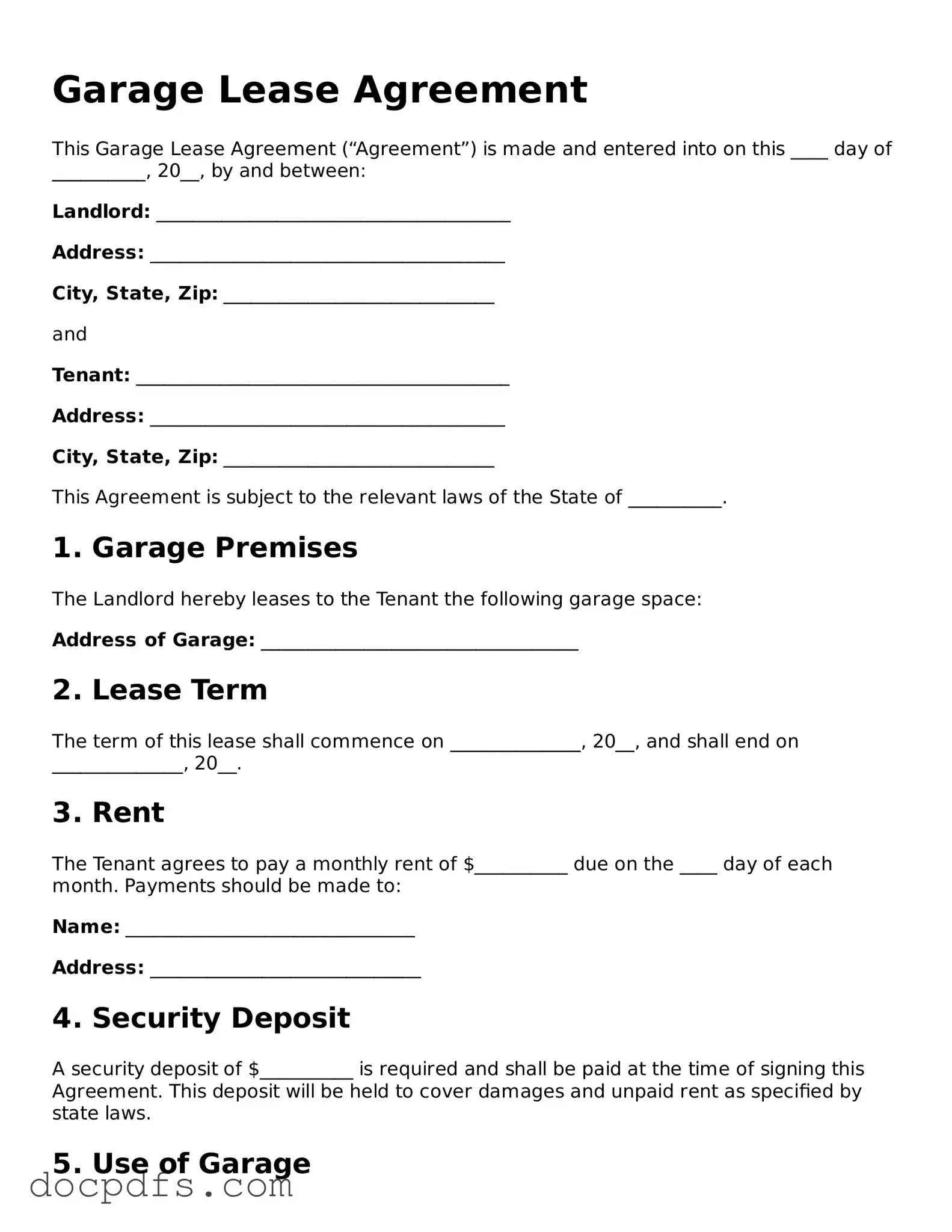What is a Garage Lease Agreement?
A Garage Lease Agreement is a legal document that outlines the terms and conditions under which one party (the lessor) allows another party (the lessee) to use a garage space for a specified period. This agreement typically includes details such as rental amount, payment terms, duration of the lease, and responsibilities of both parties.
Who needs a Garage Lease Agreement?
Individuals or businesses that wish to rent out or lease a garage space should utilize a Garage Lease Agreement. This document protects the interests of both the lessor and lessee by clearly defining the terms of use and expectations. Whether for personal storage, vehicle parking, or other purposes, having a formal agreement is advisable.
What should be included in a Garage Lease Agreement?
A comprehensive Garage Lease Agreement should include the following key elements:
-
Parties Involved:
Names and contact information of both the lessor and lessee.
-
Description of the Garage:
The physical address and specific details about the garage space being leased.
-
Lease Term:
The start and end dates of the lease.
-
Rental Payment:
Amount due, payment schedule, and acceptable payment methods.
-
Security Deposit:
Amount required, conditions for its return, and any deductions that may apply.
-
Maintenance Responsibilities:
Duties of both parties regarding upkeep and repairs.
-
Termination Conditions:
Guidelines for ending the lease early or renewing it.
How long is a typical Garage Lease Agreement?
The duration of a Garage Lease Agreement can vary widely based on the needs of both parties. Common lease terms range from month-to-month agreements to longer terms of six months or one year. It's important for both parties to agree on a duration that suits their circumstances.
Can the Garage Lease Agreement be modified?
Yes, modifications to a Garage Lease Agreement can be made if both parties consent to the changes. It is advisable to document any amendments in writing and have both parties sign the revised agreement to ensure clarity and prevent misunderstandings.
What happens if the lessee does not pay rent?
If the lessee fails to pay rent as stipulated in the Garage Lease Agreement, the lessor may have the right to terminate the lease. The specific actions taken will depend on the terms outlined in the agreement, which may include late fees, grace periods, or eviction procedures. Open communication is encouraged to resolve payment issues amicably.
Is a Garage Lease Agreement legally binding?
Yes, a Garage Lease Agreement is a legally binding contract once both parties have signed it. This means that both the lessor and lessee are obligated to adhere to the terms outlined in the agreement. If disputes arise, the agreement can be enforced in a court of law, making it essential for both parties to understand their rights and responsibilities.
